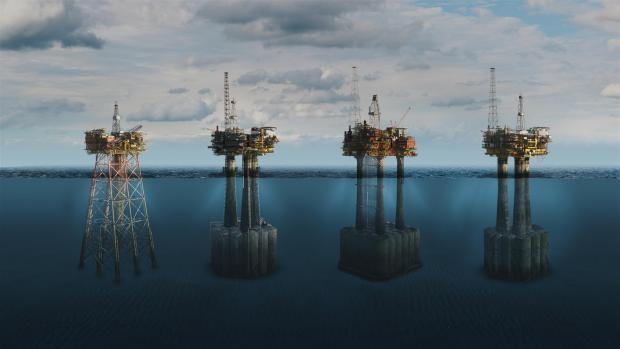
SHELL WANTS TO LEAVE

Three concrete structures each weighing as much as the Empire State Building are likely to be abandoned on the bed of the North Sea under plans by Shell to decommission the Brent platforms.
The oil company is set to ask regulators for an opt-out from international rules requiring the complete removal of platforms that have been shut down.
The rules were drawn up after a battle in the mid-1990s between Shell and environmental campaigners over where the company would dispose of the Brent Spar storage facility.
Shell is consulting experts and commercial partners about what to do with the reinforced concrete base structures, each of which rises 160m from the seabed and weighs about 300,000 tonnes. The low oil price has put companies under pressure to shut facilities as cheaply as possible.
The company said it was "considering a range of options for the Brent field" that would be submitted to the government for approval.
"One of the options being considered for the concrete gravity-based structures of three of the platforms is to leave them in place. Given these complex structures . . . were never designed to be refloated, the engineering challenge is immense."
John Shepherd, a professor at Southampton University who has led a review on behalf of Shell into how to decommission the Brent complex, said the company was likely to push for the base structures to stay in place.
"There is an environmental reason to do so — each of these things is thousands of tonnes of concrete," he said. "If you did lift them and bring them ashore, what would you do with them? The damage that these things are going to do was done when they were installed."
To leave the structures, Shell would need a derogation from the Ospar rules that are governed by 15 north-east Atlantic countries and stipulate that oil companies should remove everything from the seabed when closing down platforms.
The rules were drawn up after Shell dropped its plans to dump the Brent Spar in the deep when activists from Greenpeace, the environmental campaign group, occupied the facility.
But Greenpeace could now support the company's plans to leave the structures in place. Doug Parr, the group's chief scientist, said: "We understand that under some circumstances it would be environmentally undesirable to remove those."
Shell would not be the first to secure an opt-out from the Ospar rules. Total of France and ConocoPhillips of the US have done so for their platforms. But the move does appear to be part of a broader trend in which more companies explore opt-outs and push for a permanent dilution of the rules.
Several companies, including BP, Centrica, ExxonMobil and Shell, are helping fund a study into the impact of leaving man-made structures in the sea. That study will publish its findings some time after 2017.
Those companies say abandoning some structures could be more environmentally friendly than trying to remove everything from below the sea. It would also be less costly, an important factor with oil trading around $40 a barrel.
They are likely to face vociferous opposition from environmental groups, however, which insist that Ospar rules should remain even if exceptions are made.
Mr Parr said: "The presumption needs to be that these wastes should be brought ashore just in the same way that we would expect any industry in the world to look after their wastes, and not just leave them where they put them."
-----
More:





